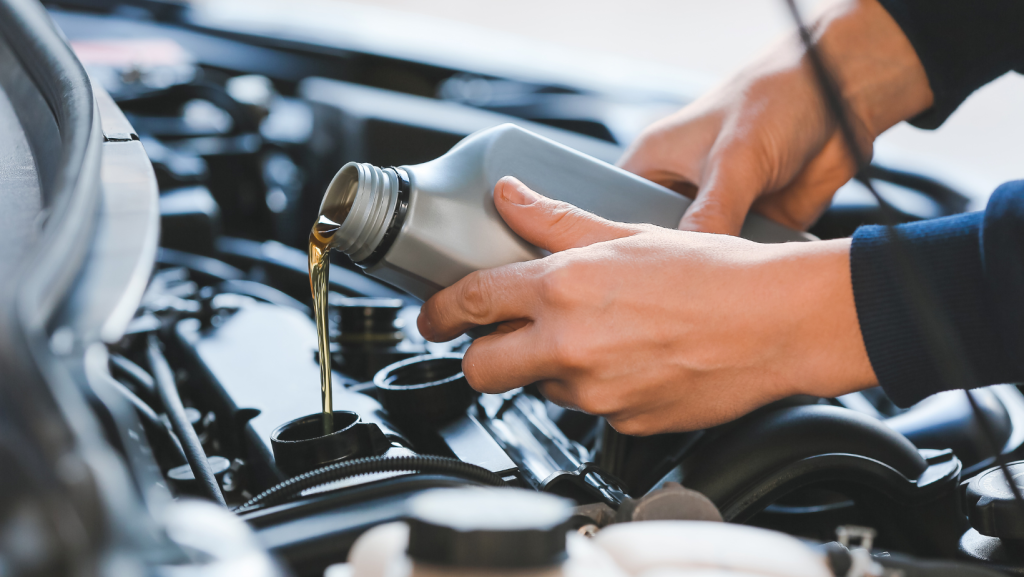Why Oil Changes are Important
In order to keep a vehicle running smoothly and efficiently, it requires regular maintenance. One crucial aspect often overlooked is the importance of regular oil changes. This is because engine oil acts as the lifeblood of your vehicle, lubricating its components, reducing friction, and ensuring optimal performance. In this blog post, we will delve into the significance oil changes and explore the various benefits they offer in terms of engine longevity, fuel efficiency, and overall reliability.
- Engine Longevity
- One of the primary reasons to prioritize regular oil changes is to promote engine longevity. Over time, engine oil becomes contaminated with dirt, debris, and engine byproducts. These impurities can lead to the formation of sludge, hindering the oil’s ability to effectively lubricate the engine components. As a result, increased friction and heat build-up can cause accelerated wear and tear, leading to premature engine failure.
- By adhering to a routine oil change schedule, you ensure that fresh, clean oil is continuously circulating through the engine, providing optimum lubrication. This reduces friction and heat, preventing excessive wear on vital components such as the crankshaft, pistons, and valves. Regular oil changes help to maintain proper engine function, extend its lifespan, and avoid costly repairs or engine replacements.
- Enhanced Fuel Efficiency
- Another significant advantage of regular oil changes is improved fuel efficiency. As engine oil degrades, it loses its ability to effectively reduce friction and lubricate the engine parts. This increased friction results in decreased engine efficiency, requiring more energy to overcome resistance and maintain optimal performance.
- By changing the oil at recommended intervals, you ensure that the engine operates with clean and high-quality lubrication. This minimizes internal friction, enabling the engine to run more efficiently and consume less fuel. According to the U.S. Department of Energy, regular oil changes can improve fuel economy by up to 2%, which can translate into considerable savings over time, particularly for those who commute long distances or rely heavily on their vehicles.
- Reliable Performance and Consistent Power
- Regular oil changes contribute significantly to maintaining a reliable and consistent performance from your vehicle. Clean engine oil ensures that all the moving parts within the engine are properly lubricated, reducing the risk of overheating and component failure. Proper lubrication helps maintain optimal engine power output, ensuring your vehicle performs at its best in various driving conditions.
- Fresh oil also helps to regulate engine temperature by dissipating heat generated during combustion. When oil becomes old and contaminated, it loses its heat-transfer properties, leading to increased engine temperature and potential damage. By adhering to regular oil changes, you help prevent engine overheating and protect critical engine components from excessive heat, improving overall performance and reliability.
- Preventative Maintenance and Cost Savings
- Regular oil changes serve as a form of preventative maintenance, offering long-term cost savings. Neglecting oil changes can result in serious engine issues, such as oil sludge buildup, clogged oil filters, or damaged bearings, which can lead to expensive repairs or even complete engine failure.
- By investing in regular oil changes, you minimize the risk of major engine problems and subsequent repair costs. It is far more economical to pay for routine oil changes than to face the financial burden of significant engine repairs or replacement. Moreover, regular maintenance ensures that potential issues are detected early, allowing for timely interventions and reducing the likelihood of sudden breakdowns or inconvenient roadside emergencies.
You can get your vehicles oil changed at most any local vehicle maintenance shop. Some accept walk-ins and some will be by appointment only. If you want to save money on your next oil change, consider performing it yourself! Find a tutorial and instructions on how to do this below.
How to Perform Oil Changes
Watch the video below for a how-to on oil changes or keep scrolling for step-by-step instructions. For more “how to” videos, Click Here
Step 1: Gather the Necessary Tools and Materials Before you begin, gather the following tools and materials:
- New oil (check your vehicle’s manual for the recommended oil type and quantity)
- Oil filter (ensure it’s compatible with your vehicle’s make and model)
- Oil filter wrench
- A socket set
- Drain pan or container
- Funnel
- Rags or paper towels
- Safety gloves and goggles (optional but recommended)

Step 2: Prepare Your Vehicle Park your vehicle on a flat surface and engage the parking brake. Let the engine cool down for a few minutes, as hot oil can cause burns. It’s also advisable to place cardboard or a plastic sheet under the vehicle to catch any spills or drips.
Step 3: Locate the Oil Drain Plug Refer to your vehicle’s manual to find the oil drain plug. Typically, it’s located underneath the engine. Slide under the vehicle and identify the drain plug, which is usually a bolt-like object at the bottom of the oil pan.
Step 4: Drain the Old Oil Position the drain pan underneath the oil drain plug. Using a socket wrench, loosen the drain plug in a counterclockwise direction. Once loose, carefully unscrew it by hand, allowing the old oil to drain completely into the pan. Be cautious, as the oil might still be hot. Once the oil has drained, wipe off the drain plug and set it aside in a safe place.
Step 5: Replace the Oil Filter The oil filter is usually located near the oil pan. Using an oil filter wrench, loosen and remove the old filter by turning it counterclockwise. Be prepared for some oil to spill during this step. Before installing the new filter, apply a thin layer of fresh oil to the rubber gasket on the top of the filter. Then, screw the new filter onto the engine by hand, ensuring it’s snug but not overtightened.
Step 6: Install the Drain Plug Once the old oil has completely drained, reinstall the drain plug. Clean the drain plug thoroughly and screw it back into place by hand. Then, use a socket wrench to tighten it, ensuring a snug fit. Be careful not to overtighten, as it could damage the oil pan or the plug.

Step 7: Refill with Fresh Oil Locate the oil filler cap under the hood. Remove it and place a funnel securely in the opening. Slowly pour the new oil into the engine, following the recommended quantity stated in your vehicle’s manual. Allow the oil to settle for a minute or two, then check the oil level using the dipstick. Add more oil if necessary.
Step 8: Check for Leaks After adding the new oil, double-check that the drain plug and oil filter are securely tightened. Inspect the area around the drain plug and oil filter for any signs of leakage. If you notice any leaks, address them promptly before operating the vehicle.
Step 9: Dispose of the Old Oil Responsibly Used motor oil is hazardous waste and should never be disposed of improperly. Collect the old oil in a suitable container and take it to a recycling center or an automotive service shop that accepts used oil. Do not dump the oil in drains, sewers, or the environment.
Changing the oil in your vehicle is a vital maintenance task that promotes engine health and longevity. By following these step-by-step instructions, you can confidently perform an oil change yourself, saving time and money. Remember to consult your vehicle’s manual for specific instructions and recommended oil types. With regular oil changes, you’ll keep your vehicle running smoothly for years to come.



